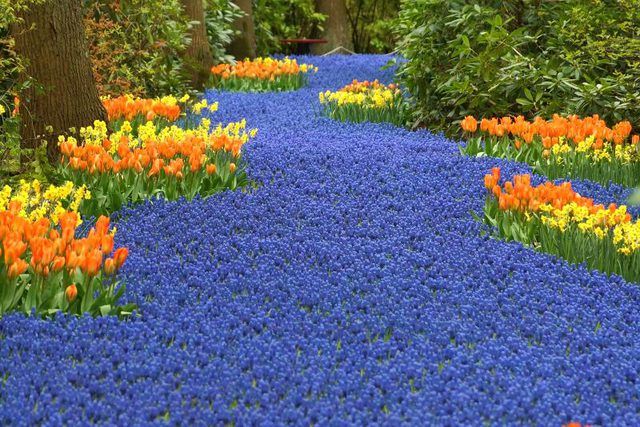Bulbs
Flower Basics
Flower Beds & Specialty Gardens
Flower Garden
Garden Furniture
Garden Gnomes
Garden Seeds
Garden Sheds
Garden Statues
Garden Tools & Supplies
Gardening Basics
Green & Organic
Groundcovers & Vines
Growing Annuals
Growing Basil
Growing Beans
Growing Berries
Growing Blueberries
Growing Cactus
Growing Corn
Growing Cotton
Growing Edibles
Growing Flowers
Growing Garlic
Growing Grapes
Growing Grass
Growing Herbs
Growing Jasmine
Growing Mint
Growing Mushrooms
Orchids
Growing Peanuts
Growing Perennials
Growing Plants
Growing Rosemary
Growing Roses
Growing Strawberries
Growing Sunflowers
Growing Thyme
Growing Tomatoes
Growing Tulips
Growing Vegetables
Herb Basics
Herb Garden
Indoor Growing
Landscaping Basics
Landscaping Patios
Landscaping Plants
Landscaping Shrubs
Landscaping Trees
Landscaping Walks & Pathways
Lawn Basics
Lawn Maintenance
Lawn Mowers
Lawn Ornaments
Lawn Planting
Lawn Tools
Outdoor Growing
Overall Landscape Planning
Pests, Weeds & Problems
Plant Basics
Rock Garden
Rose Garden
Shrubs
Soil
Specialty Gardens
Trees
Vegetable Garden
Yard Maintenance
How to Plant Muscari
How to Plant Muscari. Drifts of grape hyacinths (*Muscari spp.*) rising like mist from the soil can only mean spring is on the way. Although blue grape hyacinths are the most common, the plants also bloom in white, yellow, pink or purple. Suitable for U.S. Department of Agriculture plant hardiness zones 4 or 5 through 8 or 9, depending on variety,...

Drifts of grape hyacinths (Muscari spp.) rising like mist from the soil can only mean spring is on the way. Although blue grape hyacinths are the most common, the plants also bloom in white, yellow, pink or purple. Suitable for U.S. Department of Agriculture plant hardiness zones 4 or 5 through 8 or 9, depending on variety, the dainty bulbs multiply with enthusiasm. Massed beneath deciduous trees, they flower before the trees' leaves emerge spring. For the most impressive display, plant grape hyacinths where they have plenty of room to spread.
Planting Time and Temperature
As hardy bulbs, grape hyacinths need 14 or 15 weeks of temperatures between 32 and 45 degrees Fahrenheit to flower. Plant them early enough in the fall to ensure they'll get the required chilling period.
Early fall planting also gives the bulbs time to develop root systems before the soil freezes. Plant them four weeks before the temperature stops rising above 32 degrees in your area. After that, it's too cold for the frozen soil to thaw during the day.
Choosing the Site
Plant grape hyacinth where it will receive four or more hours of daily sun. Choose a location with well-draining, averagely fertile soil where the bulb can spread without encroaching on other plants. Small bulbs such as grape hyacinths display most attractively in groups of 50 or more. Space them 3 to 4 inches apart.
Preparing the Soil
The biggest obstacle grape hyacinths face is poor drainage. To keep them happy, amend the planting site soil before planting with well-aged manure, compost or peat moss.
Cover every 10 square feet of the planting bed with 1 to 2 bushels -- 25 to 50 pounds -- of the amendment and work it into the top 8 inches of soil with a spade or tilling fork. Don't skimp on the amendment; a generous amount keeps bulbs healthy for years.
Planting the Bulbs
If the soil is loam or clay, dig the planting holes with a trowel; if it's sandy, use a specialized tool called a bulb dibble. Insert its pointed end 3 to 4 inches deep into the soil and work it back and forth to create a hole large enough for the bulb.
Before planting, sprinkle the base of each hole with 1/4 to 1/2 teaspoon of 0-46-0 superphosphate fertilizer and scratch it into the soil so it won't touch the bulbs. Phosphorous -- the "P" in N-P-K fertilzer -- promotes healthy roots.
Place a bulb with its pointed side up in each hole, leaving loose soil beneath it so its roots won't struggle. Replace half of the removed soil and water the planting bed well to settle the bulbs and add the rest of the soil. Unless the fall is exceptionally dry, don't water again before the soil freezes. Overwatering could lead to bulb rot.
Caring for Newly Planted Bulbs
To preserve soil moisture and prevent frost heaves from lifting the bulbs during winter, cover the planting bed with a 2- to 3-inch layer of organic mulch. Wood chips or pine bark make effective choices.
Grape hyacinth bulbs contain all the nutrients they need to sustain their first season of flowering.